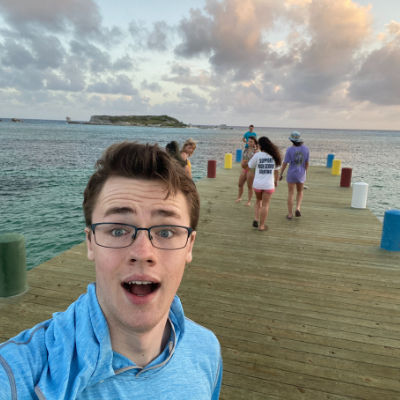Wesleyan’s Study Abroad Program Going Strong

By Maia Dawson ’24
Study Abroad offices are basically logistics hubs. There are the regular nightmares, like visa acquisitions. Then there are the less regular nightmares, like earthquakes or tsunamis. There are even the unique nightmares; lore has it that two Georgetown students were imprisoned in Cairo during the Arab Spring and then repatriated by their study abroad officers.
Wesleyan’s Office of Study Abroad has had its hands full during the global pandemic. When the first wave of the coronavirus hit Italy in March 2020, there were twenty-eight Wesleyan students in Bologna. Emily Gorlewski, director of the Study Abroad program at the Fries Center for Global Studies, called the personal cell phone number of the acting provost. Then she sent an email to Dean of Students Rick Culliton with the subject line “STRONGLY RECOMMEND SENDING ALL STUDENTS HOME.”
It has been about two years since that email was sent. Last spring there were two students studying abroad, now there are 108. “Almost normal numbers,” Gorlewski said.
Asher Edelman ’23 is in Bogota, Colombia at the Universidad de los Andes. When he spoke to me he had just gotten out of an Art History lecture, a critical class on magistral paintings, where they study patron viceroyalties and art within colonization.
The class had gone to El Museo Colonial and each student had chosen a singular piece to study. Edelman focused on a depiction of martyrdom by Don Pedro Ortiz de Zárate, a Spanish Magistrate during the 17th century. The Indigenous person who killed him stands to his right in the painting, an uncommon addition in this kind of art, “but the details of his face are poor, compared to the martyr,” Edelman added.
Edelman’s senior thesis will focus on Indigenous migration and trafficking to the metropole during Spain’s Golden Age. He is hopeful about Bogota’s archives, and that once he begins to understand his ethnolinguistics class it will also become a resource instead of just “really f**king complicated,” as Edelman describes it.
Outside the archives and museums there is Reggaeton. For orientation, the international students were welcomed into a converted school bus, gutted to make room for dancing. “The windows were down so we didn’t overheat, passing cars would honk and yell [in encouragement],” Edelman recalled.
Nick Bowman ’23 couldn’t describe the club scene on Turks and Caicos where he is studying maritime archeology. Instead, Bowman described a “secret location, a bench by a conch wall,” where looks out at the ocean and reads the fifth book in the Dune series.
His ‘school’ time is sometimes spent underwater, surveying conch populations. At other times he is studying the garbage accumulation on the windward and leeward sides of the island. He expects the scattered debris to appear more on the windward side.
The research caters to his environmental interests, like the few and salty showers that he is allocated. Archeology is his predominant focus, though. Last semester he was in Scotland where he spent four days on a dig and found cow bone originating from the 5th to 10th century. This summer he is going on a six-week dig in Israel with Kate Birney, his advisor and Professor of Archeology at Wesleyan.
Until then, he is learning soccer-specific Haitian Creole and counting conches.

